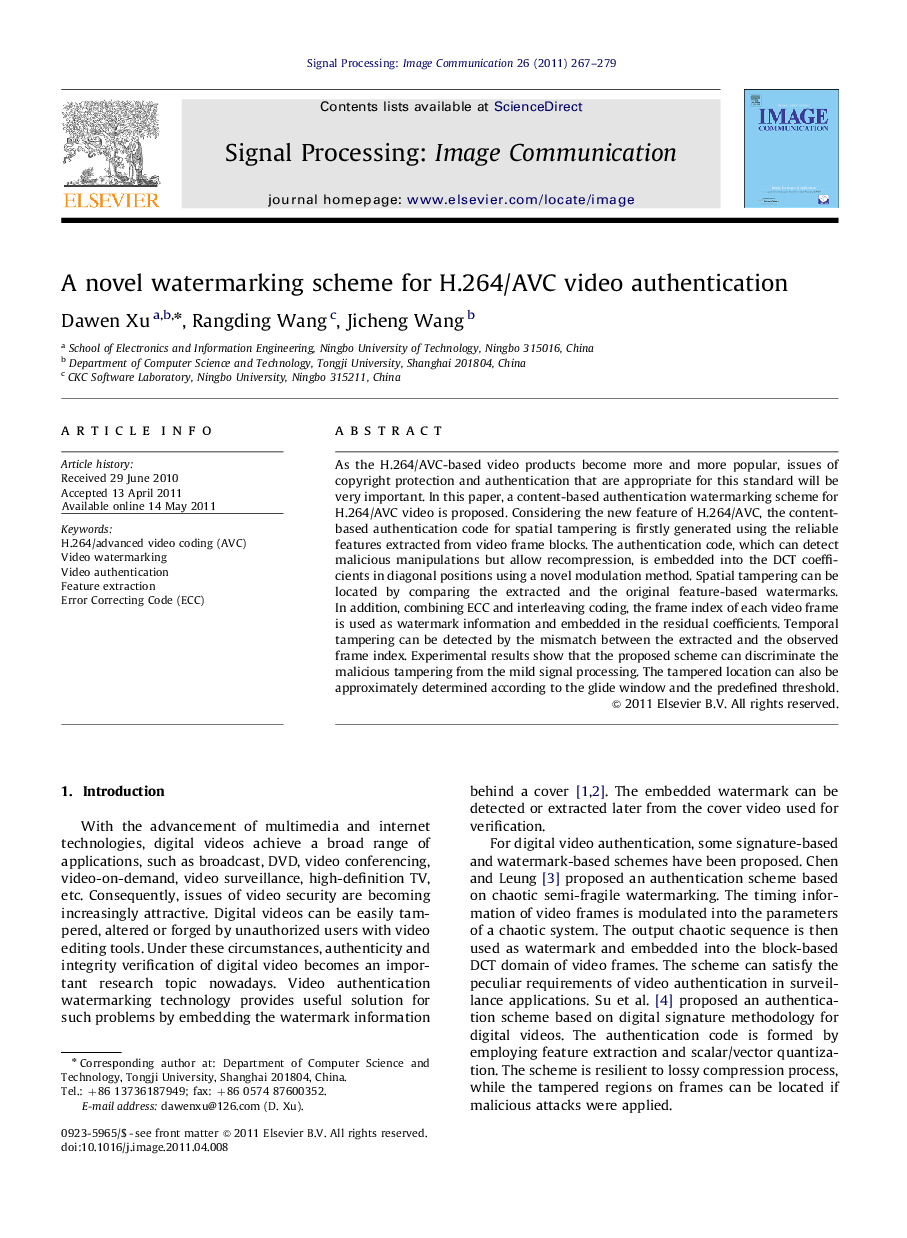| Article ID | Journal | Published Year | Pages | File Type |
|---|---|---|---|---|
| 537760 | Signal Processing: Image Communication | 2011 | 13 Pages |
As the H.264/AVC-based video products become more and more popular, issues of copyright protection and authentication that are appropriate for this standard will be very important. In this paper, a content-based authentication watermarking scheme for H.264/AVC video is proposed. Considering the new feature of H.264/AVC, the content-based authentication code for spatial tampering is firstly generated using the reliable features extracted from video frame blocks. The authentication code, which can detect malicious manipulations but allow recompression, is embedded into the DCT coefficients in diagonal positions using a novel modulation method. Spatial tampering can be located by comparing the extracted and the original feature-based watermarks. In addition, combining ECC and interleaving coding, the frame index of each video frame is used as watermark information and embedded in the residual coefficients. Temporal tampering can be detected by the mismatch between the extracted and the observed frame index. Experimental results show that the proposed scheme can discriminate the malicious tampering from the mild signal processing. The tampered location can also be approximately determined according to the glide window and the predefined threshold.
► Effective semi-fragile watermarking scheme exploiting new features of H.264/AVC is proposed. ► Reliable features are derived from video frame blocks to form the authentication code. ► Spatial tampering can be located by comparing the extracted and the original features. ► Combining ECC and interleaving coding, the frame index is embedded in the residual coefficients. ► Temporal tampering can be detected by the mismatch between the extracted and the observed index.
